Avoiding customer frustration is essential to build lasting relationships with them. In this blog, we tell you why and how to do it.
Customer frustration can become a big problem for any business since losing customers, in the long run, generates trust and financial losses.
Preventing customer frustration before it becomes a problem is possible, but do you know how?
Do you know what losing a customer means to your business? And what’s more important, what should you do to prevent customer frustration before it becomes an insurmountable problem?
Frustration is a negative feeling that results from the dissatisfaction of a need or desire.
Negative experiences can lead customers to bypass the services of the company in question and move on to competitors that better meet their needs.
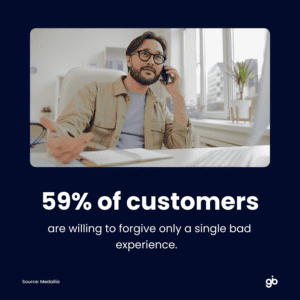
In short, customer frustration is the number one reason that hurts your sales. However, it is also an opportunity for your competitors.
That’s why you should know how to avoid customer frustration in your organization. Below, we list the mistakes to avoid in order to satisfy your customers
5 mistakes to avoid customer frustration
1. Bad Customer Service Experience
Here we include despotic, disorganized, indifferent, or mechanical attention.
No matter how many channels your customer service has, if your agents can’t handle all incoming reports quickly, efficiently, and successfully, your customers won’t get the answers they expect.
Delayed responses to requests, the need to repeat information at multiple service points, or non-existent self-service for simple requests are all hallmarks of poor service.
2. Under-qualified or under-trained staff
More often than you might think, customer service personnel do not have the knowledge or the software tools to process specific requests and provide solutions to customer-reported issues.
For example, if a customer wants to know the terms and conditions of a service, the most qualified personnel to respond to that inquiry are the contracting agents or legal representatives, not the help desk technical staff.
However, since these agents handle all inquiries at first, it is likely that neither contractors nor legal representatives are contacted to help successfully close the ticket in question.
What are the solutions? First, detect the type of requirement your customer has. Second, refer it to the department or person who can best respond timely.
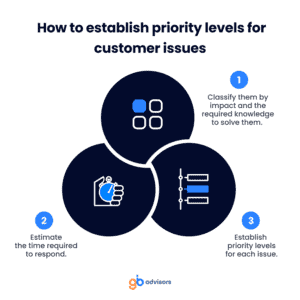
3. Long waits
Who has not experienced being put on hold while waiting for someone to answer the phone while listening to background music or an endless corporate message?
In those moments seems like the longer we wait for the answer, the less interest the company has in providing us with the solution we need.
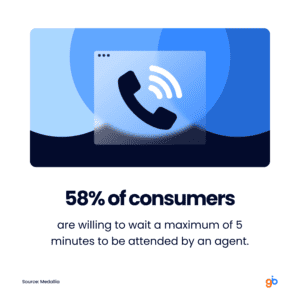
It is important to remember that long waits are not just limited to phone service. It also includes slow responses after a request in the available channels.
4. Superficial Customer – Service Operator Relationship
Another common complaint from frustrated customers is hearing the same empty, mechanical script every time they are served or going through the same process several times to report an issue.
Another phase of this problem is the need to repeat information to track ticket status when the customer service process has several stages.
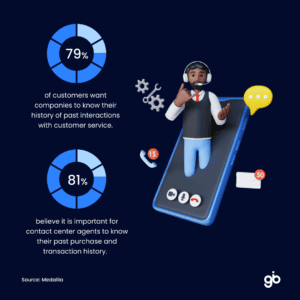
Customers perceive the company does not care, attributing discomfort, annoyance, negligence, or indifference to the operator who attends them. When in reality, it is often a simple failure to communicate.
The ideal scenarios to prevent your customer’s frustration before it becomes a problem are:
1) Assign them an exclusive agent.
2) Have all agents in the department share the same information on all customers and inquiries.
Nowadays, both cases can be currently addressed from an omnichannel customer service perspective, regardless of the size of the area or the number of requests handled.
5. Inefficient design and management of self-service solutions
One common problem when using self-service modules is the lack of instructions.
What generates this? Ignoring the real needs of your customers is one of the factors that can end up generating self-sabotage instead of self-service.
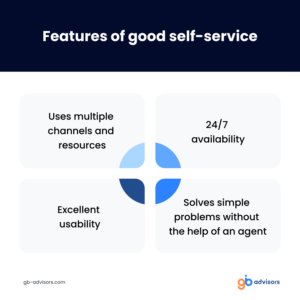
On the other hand, you should keep in mind that a solution to this matter is having in place a self-service system in place.
Your clients will benefit from this system since it will become an optimized way of dealing with easy issues.
What is the benefit for your agents? Improved workload, information, and resource management.
Agents will no longer have to invest time and energy in resolving priority 1 issues and will be able to focus on receiving only those incidents that will leverage their expertise to find a solution.
Ultimately what can you do to prevent customer frustration before it becomes a problem?
The best way to improve customer service is to approach it holistically.
Companies must ensure timely and assertive responses in any channel their customers use to deliver a consistent quality experience at every stage of the service.
How can they achieve this?
- By implementing omnichannel in their customer service area.
- By training your agents to prepare them to offer a better service.
- Automating processes within the area.
- Centralizing the management of incidents and information.
Avoiding customer frustration before it becomes a problem is essential to maintain good relationships that cement their loyalty to your company.



